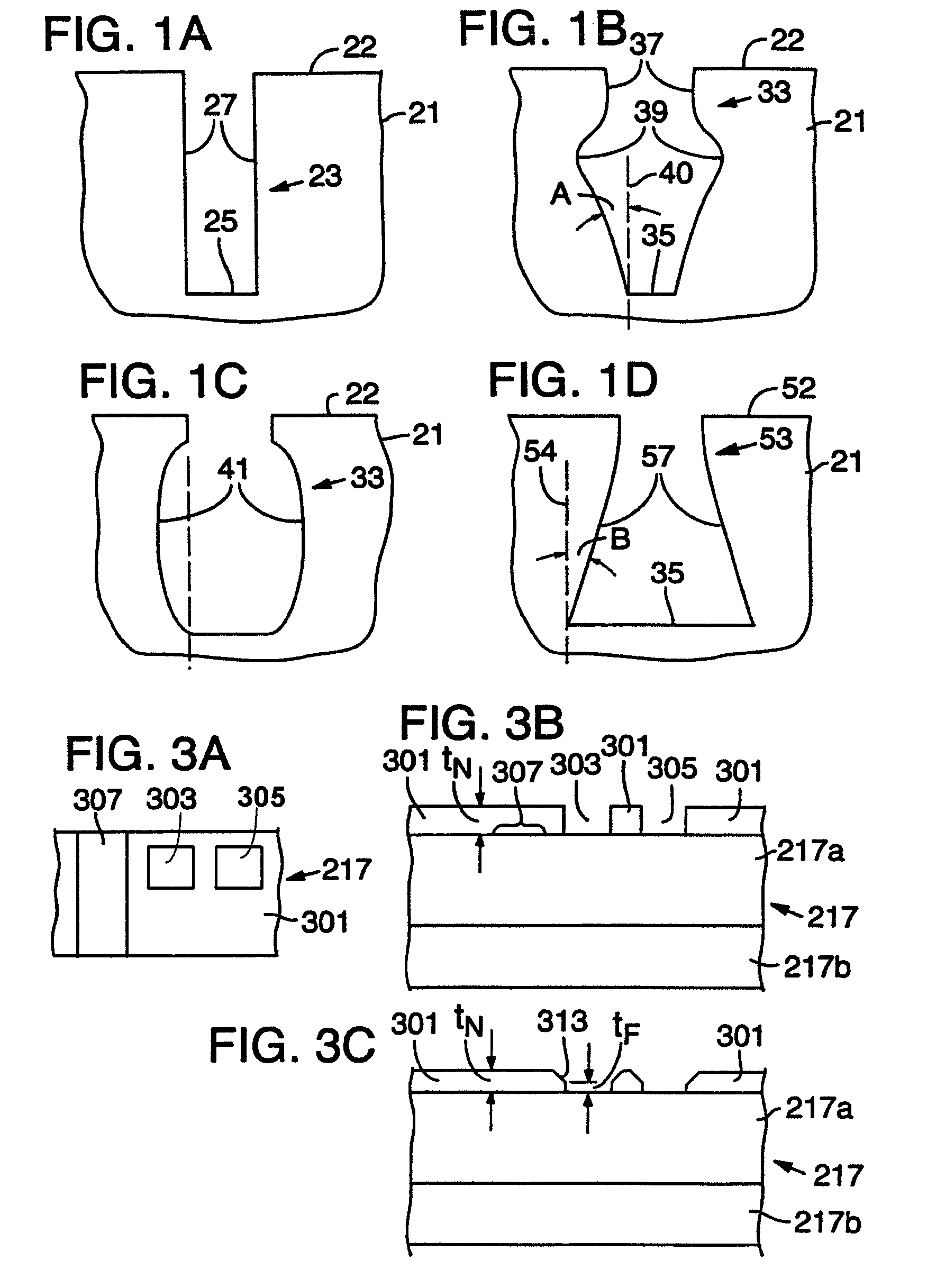Etching methods and apparatus and substrate assemblies produced therewith
a technology of substrate assembly and etching method, which is applied in the direction of transportation and packaging, electric discharge tubes, other domestic articles, etc., can solve the problems of difficult to etch deep har features into the substrate assembly, limited etching performance of dry etching with plasma, and insufficient wet etching production, etc., to achieve the effect of increasing the thickness of the resist layer
- Summary
- Abstract
- Description
- Claims
- Application Information
AI Technical Summary
Benefits of technology
Problems solved by technology
Method used
Image
Examples
Embodiment Construction
[0033]Methods, apparatus, and etched substrate assemblies are disclosed. In semiconductor manufacturing, a common starting material is a silicon wafer that is either doped or undoped. For some semiconductor devices, other wafer materials are used such as GaAs and InP. During device manufacturing, layers of various materials are applied to a surface of the wafer and circuit features are defined on the wafer. As used herein, a substrate assembly refers to a semiconductor wafer including any features or layers formed on the wafer.
[0034]The methods and apparatus disclosed are suitable for etching so-called high-aspect ratio (“HAR”) features as well as other features. As used herein, a high-aspect-ratio feature is a feature having a depth-to-width ratio of at least 5:1, wherein a depth is a dimension of a feature measured in a direction perpendicular to the etched surface of the substrate assembly, and a width is a dimension of a feature measured in a direction parallel to the etched sur...
PUM
| Property | Measurement | Unit |
|---|---|---|
| thickness | aaaaa | aaaaa |
| thickness | aaaaa | aaaaa |
| thick | aaaaa | aaaaa |
Abstract
Description
Claims
Application Information
 Login to View More
Login to View More - R&D
- Intellectual Property
- Life Sciences
- Materials
- Tech Scout
- Unparalleled Data Quality
- Higher Quality Content
- 60% Fewer Hallucinations
Browse by: Latest US Patents, China's latest patents, Technical Efficacy Thesaurus, Application Domain, Technology Topic, Popular Technical Reports.
© 2025 PatSnap. All rights reserved.Legal|Privacy policy|Modern Slavery Act Transparency Statement|Sitemap|About US| Contact US: help@patsnap.com



